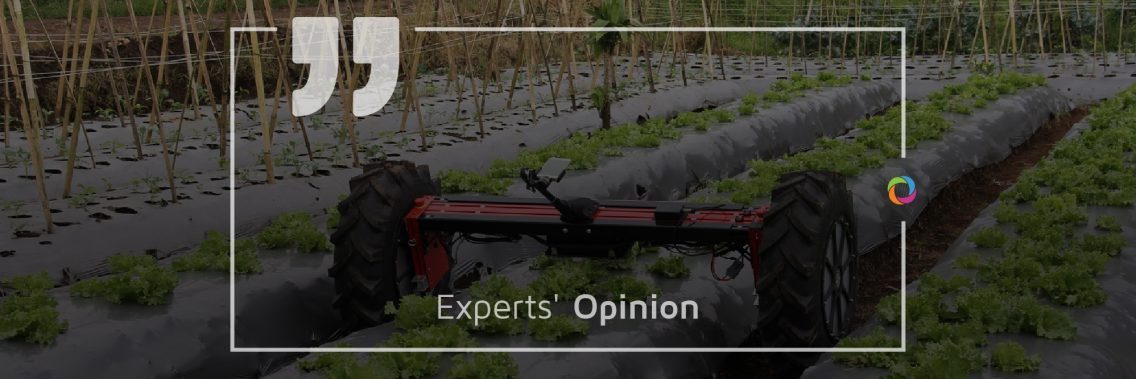Stunning technological advances in robotics are being reported virtually on a daily basis, ranging from versatile mobile robots being used in agriculture and the manufacture of jeans to autonomous vehicles. The International Federation of Robotics estimates that next year the stock of industrial robots will grow by more than 250,000 units annually. The impact of robots on employment and trade is a topic that is being greatly discussed in academic, public and international development debates. To stay up to date on this subject, we addressed several questions to some DevelopmentAid experts.
How do you see the future of robots in developing countries?

“Some developing countries use robots to control traffic, mine and to fight disease. For example, in the Democratic Republic of the Congo, robots are already a part of everyday life with eight feet tall and solar-powered machines being brought into direct traffic. These robots eliminate the need for human traffic wardens and prevent road accidents. Further to the east, Rwanda plans to be the world’s first drone port to deliver medical and emergency supplies to its rural areas. In Tunisia, Ezzayera Startup has created “ATLAS”, a robot to help farmers plant and control their crops plants, as in Tanzania and Uganda where drones with sensors control plants and detect stress in them ten days before humans can. Furthermore, in the 2014 Ebola crisis, Liberia took full advantage of robots that had the ability to disinfect – in just few minutes – rooms where Ebola patients had been treated, a feat too risky for humans. In South Africa and Botswana, robots in the gold mining industry reduce the associated risk involved in this activity and delve depths that human miners simply cannot reach. All these projects are the result of work using local skills, engineers, researchers or technicians who have a university level education and with or without partnership with international institutions such as MIT. Other robots can be created to facilitate the automation of tasks in the economy sectors of developing countries thanks to artificial intelligence and the internet of objects, such as robots to test and control the quality of products or manage household waste bins.”

“Taking Latin America as an example, where its main productive sectors are resource extraction activities, the growth of these countries is directly affected by the possibility of improving the productivity levels of their industries. Since they are based on sequential processes, it’s the degree of automation that plays an important role in output indicators and, if these are expected to increase, conventional automation will not suffice. The use of robotics and related development areas such as artificial intelligence for decision making and predictive systems for early maintenance to complement and strengthen the existing scenario will thereby improve operational continuity. For example, today in Chile the Chuquicamata underground mine is seeking to increase its productivity from 5,000 to 140,000 tons of minerals per day by 2026. To face this challenge, it’s necessary to have a high degree of automation and robotics which must be a relevant tool. For example, to decrease detention maintenance you can use robotics in mill lining replacement. In developing countries, its use will take time to establish itself in the production sector since a change within people and industries is required.”

“Post COVID-19, there will be a new era of ‘Low-Touch Economy’, so called by the Board of Innovation, where there will be a tendency to reduce physical interaction between humans and less mobility, thus collaborative robots will be used more in all work areas whether this production, logistics or administration.”
How can the development of robots affect developing countries? What are both the positive and negative aspects?

“Considering that the main industries of developing countries are the extraction of natural resources, manufacturing and agriculture, a way to improve productivity levels is the use of robotics and related development areas to complement and strengthen the existing scenario, and thereby improve operational continuity. A positive aspect to highlight is the decrease in occupational injuries where, for example, in the Chilean mining industry, it’s possible to automate the SAG mill lining replacement through robotics thereby removing exposure to high risks and workplace injury. On the other hand, technological change is highly feared because it’s difficult for people to understand how this change will take place. Process automation will replace human-executed tasks but will not necessarily shrink net demand for labor. New needs will create new jobs. However, developing countries may be affected by job transition due to barriers to accessing education and the quality of their educational institutions which may increase gaps in social inequality.”

“Robots can play a major role in the economies of developing country but need to be held in balance through the government’s role in regulating and coordinating their implementation. Otherwise developing countries will face downside risks such as increased unemployment and privacy violation. International organizations can play a positive role by supporting governments in research and coordination, particularly through replicating success stories from elsewhere. International organizations can also help developing economies prepare for a future of robotics by training civil service employees in the legal and ethical aspects.”
What is the impact of automation on international development?

“The effects of automation on international development are coming swiftly, and will catch many incumbent and well-financed actors in the industry on the wrong foot. The consequences they face are no different to those faced by the natural world – incumbent organizations will face irrelevance and extinction if they fail to adapt. Their demise will be preceded by a significant amount of pressure, particularly at the political level, to deploy inefficient and even questionable tactics to maintain their market share. However, automation carries with it the potential for local entities to deliver – at scale – a more nuanced value proposition to each individual aid recipient.”

“In terms of international development, countries that have a good level of educational system such as India, Tunisia, Morocco, Senegal, Malaysia, and Romania … will be able to take advantage of new disruptive technologies such as robotics to positioning themselves as a technology supplier to other countries, for example a small country can specialize in the production of a single type of robot. On the other hand, robotics can encourage countries such as the USA, Brazil and the EU states to go in the direction a reduction in the subcontracting work awarded to developing countries and a relocation of production back to their own country utilizing massive robots as in the case of the automobile industries. Mexico is in the front line being under pressure from the USA’s desire to relocate the production of cars back to its country.”
Check more than 150 job opportunities in engineering here.

